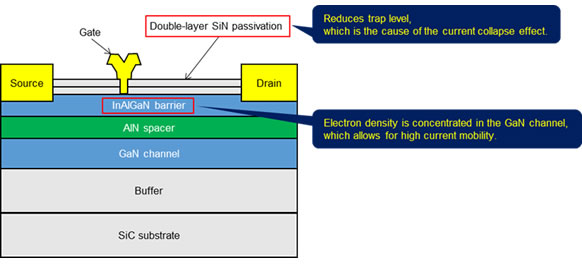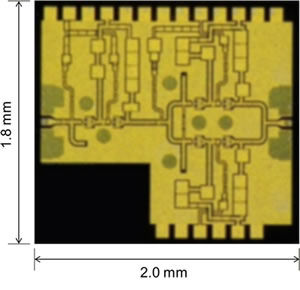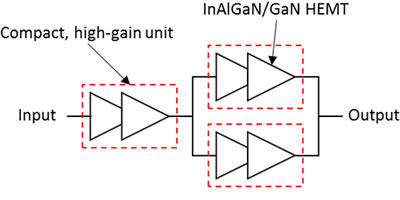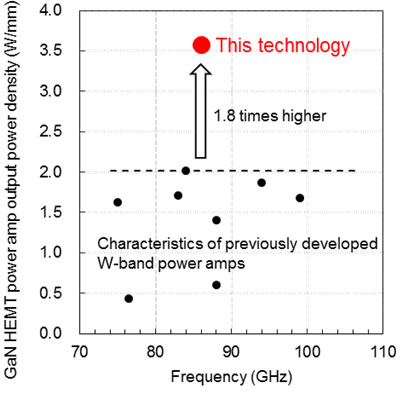Archived content
NOTE: this is an archived page and the content is likely to be out of date.
Fujitsu Develops GaN Power Amplifier with World's Highest Output Performance for W-Band Wireless Transmissions
Output performance is 1.8 times greater than before, enabling over 30% greater range for high-speed wireless networks
Fujitsu Limited,Fujitsu Laboratories Ltd.
-
[1] Gallium nitride
A wide band-gap semiconductor material that operates with a higher breakdown-voltage than semiconductor technologies based on previous materials, such as silicon (Si)- or gallium-arsenide (GaAs)-based technologies.
-
[2] High electron mobility transistor
A field-effect transistor that takes advantage of operation of the electron layer at the boundary between semiconductor materials with different bandgaps, which is relatively rapid compared to that within conventional semiconductors. Invented in 1980 by Fujitsu, this technology is currently used in a number of IT applications, including satellite transceivers, cellular equipment, GPS-based navigation systems, and broadband wireless networking systems.
-
[3] GaN-HEMT device with a unique structure
For details on GaN-HEMT technology, see the presentation announced at the 2015 IEEE International Electron Devices Meeting (IEDM 2015) of December 2015.
About Fujitsu
Fujitsu is the leading Japanese information and communication technology (ICT) company, offering a full range of technology products, solutions, and services. Approximately 159,000 Fujitsu people support customers in more than 100 countries. We use our experience and the power of ICT to shape the future of society with our customers. Fujitsu Limited (TSE: 6702) reported consolidated revenues of 4.8 trillion yen (US$40 billion) for the fiscal year ended March 31, 2015. For more information, please see http://www.fujitsu.com.
About Fujitsu Laboratories
Founded in 1968 as a wholly owned subsidiary of Fujitsu Limited, Fujitsu Laboratories Ltd. is one of the premier research centers in the world. With a global network of laboratories in Japan, China, the United States and Europe, the organization conducts a wide range of basic and applied research in the areas of Next-generation Services, Computer Servers, Networks, Electronic Devices and Advanced Materials. For more information, please see: http://www.fujitsu.com/jp/group/labs/en/.
Technical Contacts
Devices & Materials Laboratory
![]() E-mail: gan_press_ml@ml.labs.fujitsu.com
E-mail: gan_press_ml@ml.labs.fujitsu.com
Company:Fujitsu Laboratories Ltd.
All company or product names mentioned herein are trademarks or registered trademarks of their respective owners. Information provided in this press release is accurate at time of publication and is subject to change without advance notice.
Date: 25 January, 2016
City: Tokyo and Kawasaki, Japan
Company:
Fujitsu Limited / Fujitsu Laboratories Ltd.



